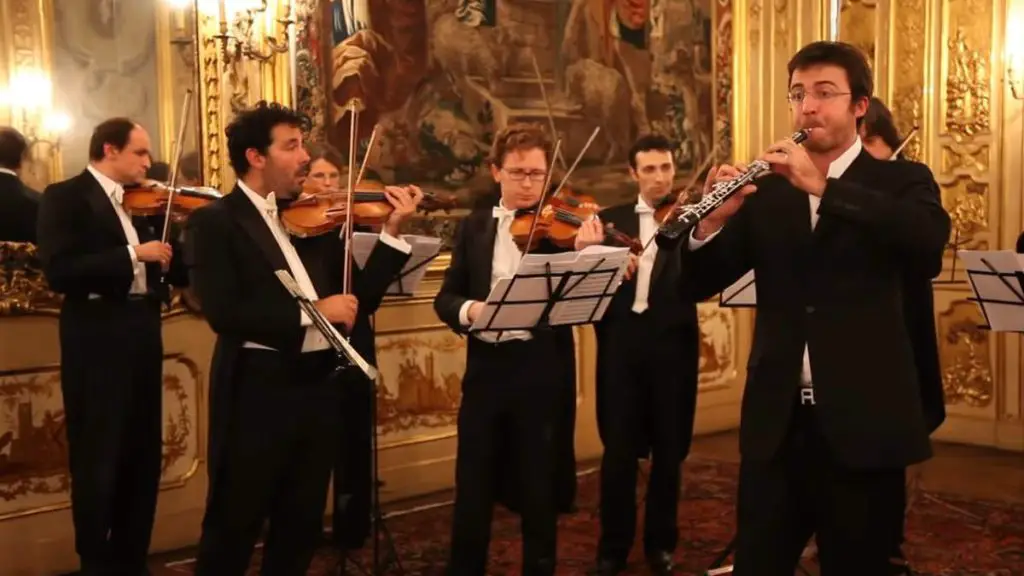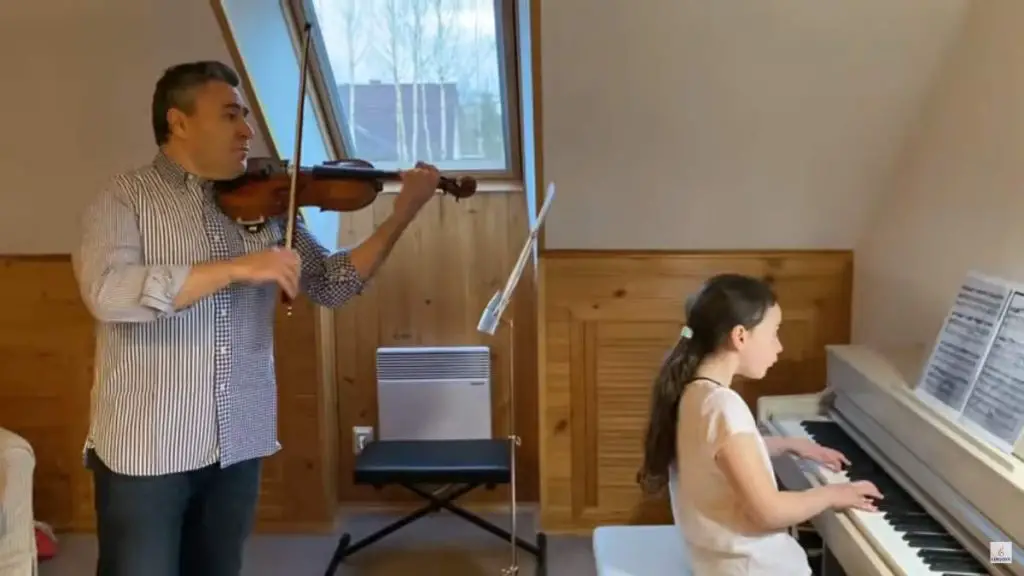Milano-based Italian chamber orchestra Cameristi della Scala performs the Venetian Baroque composer Alessandro Marcello’s Oboe Concerto in D minor, S D935. Soloist: Fabien Thouand, oboe.
Alessandro Marcello’s Oboe Concerto
Alessandro Marcello’s Oboe Concerto is a beautiful and well-known work of Baroque music. It was composed in the early 18th century, likely between 1708 and 1717, and was originally written for the oboe, strings, and continuo.
The concerto is comprised of three movements, with the first and third movements being lively and joyful, while the second movement is a slower, more reflective adagio. The piece showcases the oboe’s unique and expressive qualities, with the solo oboe line dancing gracefully over the accompanying strings and continuo.
One interesting aspect of the concerto is that it was originally published in Amsterdam in 1717 under the name “Eterio Stinfalico,” which was a pseudonym used by Marcello. It is not entirely clear why he chose to publish under a pseudonym, but it may have been because he was a member of the Venetian nobility and did not want to appear to be seeking financial gain through his music.
The work was originally attributed to Johann Sebastian Bach, but later research revealed that it was actually composed by Alessandro Marcello (1673-1747), an Italian nobleman, and composer who lived in Venice in the early 18th century.
Today, Alessandro Marcello’s Oboe Concerto remains a beloved and frequently performed work of the Baroque repertoire. Its elegant melodies and nimble oboe passages continue to captivate audiences and musicians alike.
Movements
The piece has three movements:
- Andante spiccato
- Adagio
- Presto
1. Andante spiccato
After the orchestral introduction, the solo oboe enters with a playful and virtuosic melody. The oboe’s line is full of rhythmic intricacies, with quick runs and trills, and it dances effortlessly above the accompaniment.
As the movement progresses, the oboe and orchestra engage in a lively and playful dialogue. The oboe introduces new melodic material, which is then echoed and developed by the strings and woodwinds. The music builds to a climax with a fiery cadenza for the solo oboe, showcasing the virtuosity and technical skill of the performer.
Throughout the movement, Marcello displays a masterful command of Baroque musical forms and techniques. The music is full of lively rhythms, intricate ornamentation, and delightful melodies, making it a joy to listen to and perform. The first movement of Alessandro Marcello’s Oboe Concerto is a true gem of the Baroque repertoire and a testament to the beauty and expressiveness of the oboe as a solo instrument.
2. Adagio
The second movement of Alessandro Marcello’s Oboe Concerto is marked “Adagio” and is a slow and lyrical piece. It begins with a tender and introspective melody played by the solo oboe, accompanied by a simple chord progression in the strings. The oboe’s melody is characterized by long, flowing phrases and subtle nuances of dynamics and articulation.
As the movement progresses, the orchestra plays a more prominent role, providing a lush and harmonic backdrop for the oboe’s melodic lines. The oboe continues to play a central role, with the orchestra often providing delicate counterpoint and harmonization.
The middle section of the movement features a brief, but expressive, cadenza for the solo oboe, showcasing the performer’s ability to sustain long, expressive phrases and execute delicate ornamentation with precision.
The movement concludes with a return to the opening material, with the oboe and orchestra performing a gentle and peaceful coda. The second movement of Alessandro Marcello’s Oboe Concerto is a beautiful and introspective piece that highlights the expressive capabilities of the oboe as a solo instrument.
3. Presto
The finale of Marcello’s Oboe Concerto is a lively and virtuosic Presto in 3/8 time. The movement features a lively and rhythmic orchestral introduction, with the strings and woodwinds playing fast and intricate runs that set the stage for the solo oboe.
When the solo oboe enters, it plays a playful and nimble melody that weaves in and out of the orchestral accompaniment. The music is characterized by its lively rhythms, intricate ornamentation, and rapid-fire exchanges between the soloist and orchestra.
Throughout the movement, Marcello showcases his mastery of Baroque musical forms and techniques. The music is full of playful and engaging melodies, lively rhythms, and intricate ornamentation that keeps the listener engaged from start to finish.
As the movement reaches its climax, the solo oboe performs a dazzling and virtuosic cadenza that showcases the performer’s technical skill and artistry. The movement concludes with a lively and energetic coda that brings the concerto to a thrilling and satisfying conclusion.
Cameristi della Scala

Cameristi della Scala was established in 1982 by musicians from the Teatro alla Scala di Milano. This ensemble possesses a unique identity as they perform regularly both with and without a conductor. Their core repertoire encompasses numerous chamber orchestra masterpieces from the 18th century to the current era, and they additionally strive to showcase and support the works of lesser-known Italian composers.
The orchestra frequently showcases section leaders from La Scala orchestra as soloists and collaborates with various renowned instrumentalists and opera singers. The orchestra’s musical phrasing, enriched with an unmistakable Italian sound, was shaped by the significant artistic influence of celebrated conductors from the past and present who have worked at Teatro alla Scala.
Throughout the world, Cameristi della Scala has graced many prestigious venues and concert halls with their performances. During the 2017-18 season, they embarked on their first tour of India and made their debut appearance in Tunisia, in addition to being featured in the Meisterinterpreten Series in TonhalleMaag Zürich, the Beethovenfest in Bonn, and the Lisinski Theatre in Zagreb. They also closed the Variations Musicales de Tannay festival in Switzerland.
In May 2018, to commemorate Leonard Bernstein‘s Centennial Year, Cameristi della Scala presented a special concert in honor of the legendary musical icon at Teatro alla Scala. Moreover, they collaborated with celebrated Italian danseur and La Scala principal dancer Roberto Bolle on an original project at the 2018 Davos World Economic Forum. The season was concluded with the world premiere of a new piece by composer and cellist Giovanni Sollima, which Cameristi performed at Teatro alla Scala.
Sources
- Cameristi della Scala official website
- Oboe Concerto (Marcello) on Wikipedia
- Alessandro Marcello on Wikipedia


![Bach: Oboe Concerto in F major, BWV 1053R [Emma Black, Netherlands Bach Society]](https://cdn-0.andantemoderato.com/wp-content/uploads/2023/06/Bach-Oboe-Concerto-in-F-Major-BWV-1053R-Emma-Black-Netherlands-Bach-Society-1024x576.jpg)